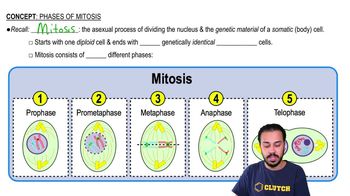Textbook Question
Draw a normal ECG pattern. Label and explain the significance of its deflection waves.
803
views
 Verified step by step guidance
Verified step by step guidance Verified video answer for a similar problem:
Verified video answer for a similar problem:



 9:48m
9:48mMaster Electrocardiogram with a bite sized video explanation from Bruce Bryan
Start learning